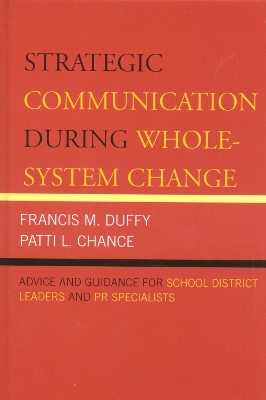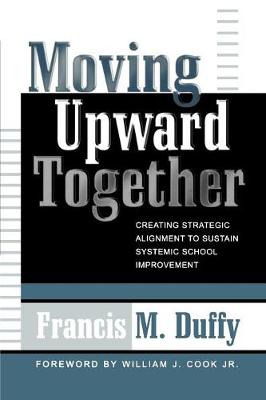Leading Systemic School Improvement
4 total works
Strategic Communication During Whole-System Change
by Francis M. Duffy and Patti L. Chance
Published 16 November 2006
Times of great change in school districts require strategic communication with internal and external stakeholders including the use of school public relations tools and techniques. Strategic Communication During Whole System Change provides theoretical and practical advice and guidance to district-based change leaders and school public relations specialists on how they can support their district's transformation journey by engaging in strategic communication. The book also provides guidance on how to make simultaneous fundamental changes in three key sets (or change paths) of organizational variables that affect a school system's overall performance: Path 1-a district's relationship with stakeholders in the external environment; Path 2- a district's core and supporting work processes; and Path 3- a district's internal social infrastructure. A collection of essays written by school public relations practitioners and other change leaders who share their views is also included.
If school districts want to maintain a high level of performance and sustain improvements that have been achieved during this period of large-scale, whole-district transformation, district leaders need to align their district, both vertically and horizontally. Alignment assures that the work of individuals supports their team goals, the work of teams supports their school's goals, the work of schools supports their clusters, and the work of clusters supports the district's grand vision and strategic direction. This groudbreaking work presents qualitative information about the nature of strategic alignment in school systems and how to create and sustain it. Duffy combines this knowledge with information about how school districts function as systems, about the requirements of strategic planning, and presents a structured, experience-based methodology for transforming school systems. Any and all change-leaders in school districts will benefit from the information Duffy presents. Additionally, school board members and policymakers should be interested. Graduate students taking courses on systemic change in school districts ought to find the book helpful. The book is particularly useful for those change-leaders and policymakers who either want to transform their districts to meet the Baldrige Criteria for Performance Excellence or to satisfy the requirements of No Child Left Behind.
Dream! Create! Sustain! is written for courageous, passionate, and visionary change leaders working in school systems throughout the world. It provides those change leaders with essential concepts, principles, strategies, and tactics for how to create and sustain whole-system change in their school systems. The information provided by Duffy is based on years of research on and real-world experience with systemic change, learning organizations, systems thinking, and organization-wide change. This book includes a description of a transformational change methodology and set of tools specifically designed to create and sustain whole-system change.
The interplay of power, political behavior, and ethics has been the subject of many books and articles about business organizations, but little has been published about using power and political skills in ethical ways to lead whole-system change in school districts. This book does. Readers will learn about the context for change in school districts, including a compendious description of a methodology specially designed to create and sustain whole-system change. Seven essays written by noted theorists and practitioners provide valuable insights on how to use power and political skills in ethical ways. This book will be of interest to change leaders, policy makers, and preparation programs for future school district leaders.



